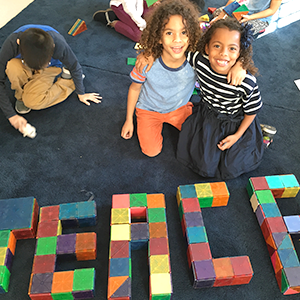Today, more than ever, parents need to be equipped with peaceful solutions
to help their children navigate the rough climate present in modern day
times. First, a quick look back at a few different approaches to adult
peace activism.
Adult Peace Activism
In the early 1900s, Indian activist Mohandas Gandhi began a movement called
“peaceful resistance” and became known for opposing violence and resolving
problems through a stubborn stance to “fight hate with love,” a movement
hailed as unusual by people of that time. In 1964, the most recognized
civil rights activist of all time, Martin Luther King, Jr., won the Nobel
Peace Prize for his work in addressing racial inequalities through
nonviolent resistance. In 1969, British musician John Lennon famously
hosted a bed-in, as an artistic variation of sit-ins, as a means of
nonviolent protesting and promoting world peace.
Interestingly, all three men were killed even as they pursued very
different ways in getting people all around them to adopt peace as a means
of resolving problems. This form of peace activism is associated with the
peace movement, which typically involves opposition to war. This story
proposes to amplify the definition of the peace movement by extending it to
children as they learn to handle difficult scenarios that have become
increasingly present in today’s society.
Peace as a Tool for Children
Challenges are being thrust upon children today. Things like bullying, the
alarming rate of suicides in children under 18, school shootings, social
and familial problems with emerging sexual identification issues, racism
and stereotypical profiling and even uncivil political debates,
unfortunately, are becoming commonplace. The best solution is something
strong and powerful to equip our children with the right methods to process
these societal challenges.
Enter Linda Ryden and her invention, the Peace of Mind program and the
school curriculum for school-age children in Washington, D.C.
Peace of Mind School Program and Curriculum
In 2003, then parent-volunteer and part-time music teacher had a small
foothold in Lafayette Elementary School, an 800-student public school
located in Northwest D.C. Ryden happened to be at the right place at the
right time as she learned of a problem that was brewing with the students
in the third grade. She offered a solution that incorporated social and
emotional skills. The school administration accepted it and it enjoyed mild
success.
Over time, Ryden experimented with her proposed solution. Some of what she
suggested worked; a lot of it did not. Feedback from the parents and school
administrators helped Ryden modify her initial solution. The most
invaluable feedback came from the students themselves, as they began to
practice what they learned, implemented Ryden’s solutions and taught their
parents different techniques associated with the solution.
Ryden’s method was a loose, modified set of teachings associated with peace
conflict skills. She was inspired by resources that focused on conflict
resolution, such as the book, “I’d Rather Teach Peace” by journalist Colman
McCarthy. Though her resources clearly indicated that step one was to calm
down, the problem was that there were no instructions given on how to get
children to calm down.
According to Peace of Mind’s executive director Cheryl Dodwell, “There were
not many roadmaps [at that time … That void] led to Ryden coming up
with the idea of ‘mindfulness.'”
Ryden kept meticulous notebooks of everything that worked and especially
that which did not. It wasn’t until many years later that Ryden would
gradually work with Dodwell to turn her dedicated notes into what would
become the Peace of Mind curriculum for school-age children.
Peace of Mind’s pilot school program began in 2016, and Peace of Mind is
now being used in 7 DCPS elementary schools, and the number is growing.
Peace of Mind is also a school curriculum that, while it originated at
Lafayette Elementary School in D.C., “has expanded to 35 states and even
some countries around the world,” according to Dodwell, because “educators
[in other states] began to hear about the program and asked Ryden how to
implement it in their own schools. Dodwell was delighted to hear that
educators as far away as Hong Kong had asked about this unique program.
Dodwell also notes that one of the best aspects of Ryden’s teachings is
that they consist of weekly 45-minute sessions in which students learn ways
to manage their emotions. “They are not evaluated or graded in any way.”
However, surveys are necessary to receive feedback from the children which
will then be used to improve the program. Dodwell is aware that other
mindfulness programs exist, but distinguishes the Peace of Mind school
curriculum by noting that it helps children by teaching them life skills
and it helps them develop personal skills in a safe, welcoming environment.
The Peace of Mind school curriculum engages children in thoughtful lessons
of mindfulness through children’s literature, active role-playing and group
movements and discussions. Though the “curriculum continues to evolve,” as
noted by Dodwell, “it is confirmed by research.”
Ryden, beams as she discusses her role in her brainchild, “I get to meet
with students one time per week to talk about the heart, mind, feelings and
relationships,” she said.
When Ryden began this program as a conflict-resolution-based lesson, she
was a volunteer who was hired to teach music on a part-time basis. The
success of the program grew to such a point that Ryden became a full-time
Peace Teacher who now teaches first through fifth grades while school
counselor Jill Diesner teaches pre-K and kindergarten students.
Educators may purchase the Peace of Mind curriculum for children in early
childhood, grades one to two, and grades three to five through their
website, teachpeaceofmind.org. Readers are encouraged to read the Peace of
Mind blog to discover colorful stories and anecdotes about the application
of peace to everyday situations.


